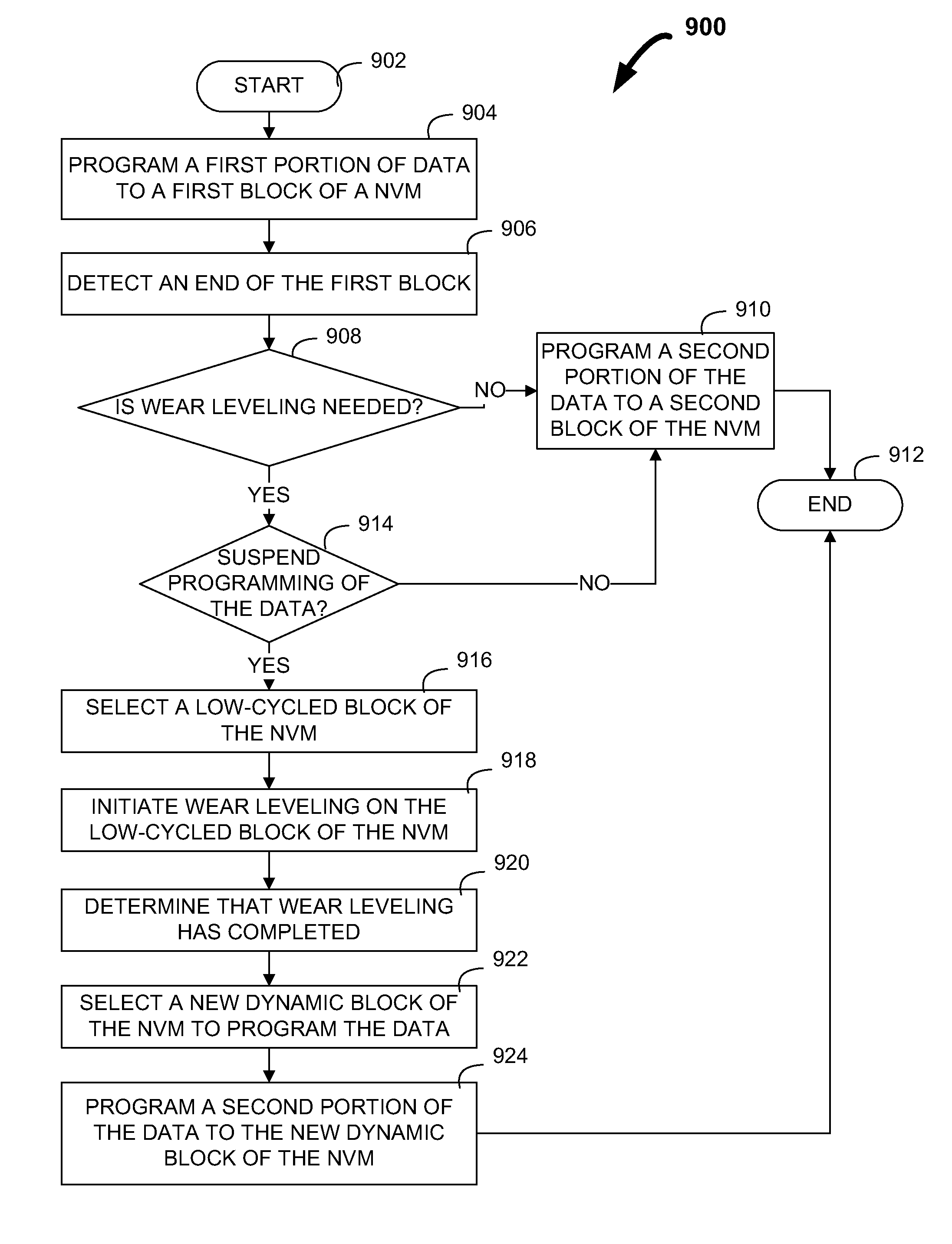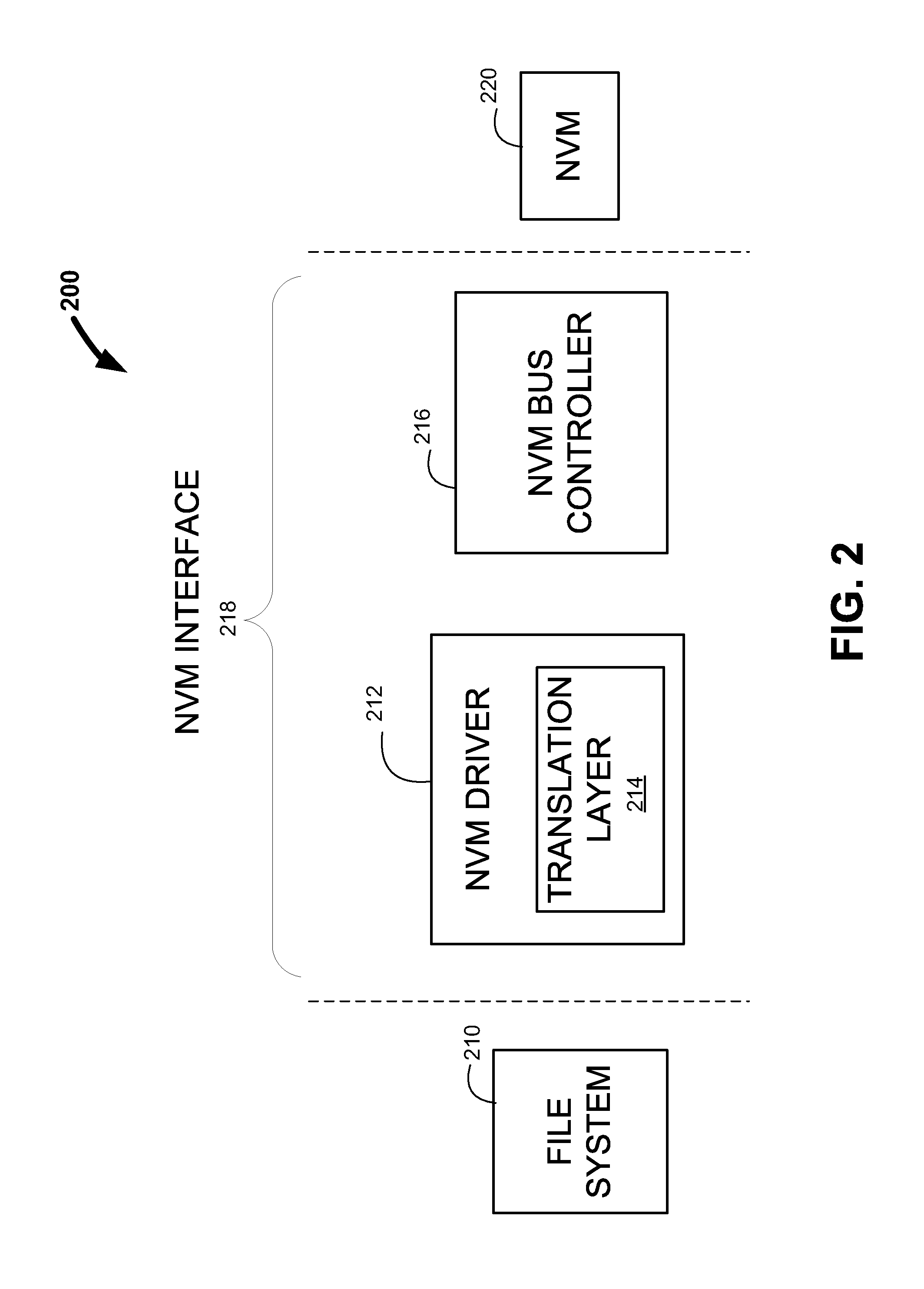Initiating wear leveling for a non-volatile memory
a non-volatile memory and wear leveling technology, applied in the direction of memory adressing/allocation/relocation, micro-instruction address formation, instruments, etc., can solve the problems of reducing the programming time of user generated writes, the wear of the nvm, and the overall power consumption of the electronic device, so as to achieve the effect of substantially improving the overall performance of the system
- Summary
- Abstract
- Description
- Claims
- Application Information
AI Technical Summary
Benefits of technology
Problems solved by technology
Method used
Image
Examples
Embodiment Construction
[0020]FIG. 1 is a schematic view of electronic device 100. In some embodiments, electronic device 100 can be or can include a portable media player (e.g., an iPod™ made available by Apple Inc. of Cupertino, Calif.), a cellular telephone (e.g., an iPhone™ made available by Apple Inc.), a pocket-sized personal computer, a personal digital assistance (“PDA”), a desktop computer, a laptop computer, and any other suitable type of electronic device.
[0021]Electronic device 100 can include system-on-a-chip (“SoC”) 110 and non-volatile memory (“NVM”) 120. Non-volatile memory 120 can include a NAND flash memory based on floating gate or charge trapping technology, NOR flash memory, erasable programmable read only memory (“EPROM”), electrically erasable programmable read only memory (“EEPROM”), Ferroelectric RAM (“FRAM”), magnetoresistive RAM (“MRAM”), any other known or future types of non-volatile memory technology, or any combination thereof.
[0022]NVM 120 can be organized into “blocks” that...
PUM
 Login to View More
Login to View More Abstract
Description
Claims
Application Information
 Login to View More
Login to View More - R&D
- Intellectual Property
- Life Sciences
- Materials
- Tech Scout
- Unparalleled Data Quality
- Higher Quality Content
- 60% Fewer Hallucinations
Browse by: Latest US Patents, China's latest patents, Technical Efficacy Thesaurus, Application Domain, Technology Topic, Popular Technical Reports.
© 2025 PatSnap. All rights reserved.Legal|Privacy policy|Modern Slavery Act Transparency Statement|Sitemap|About US| Contact US: help@patsnap.com



